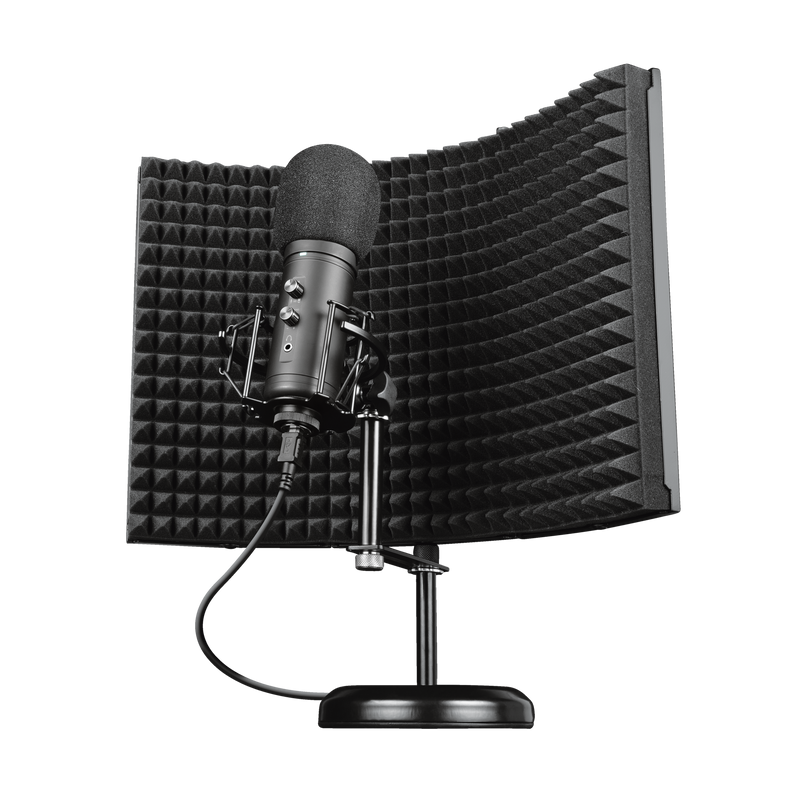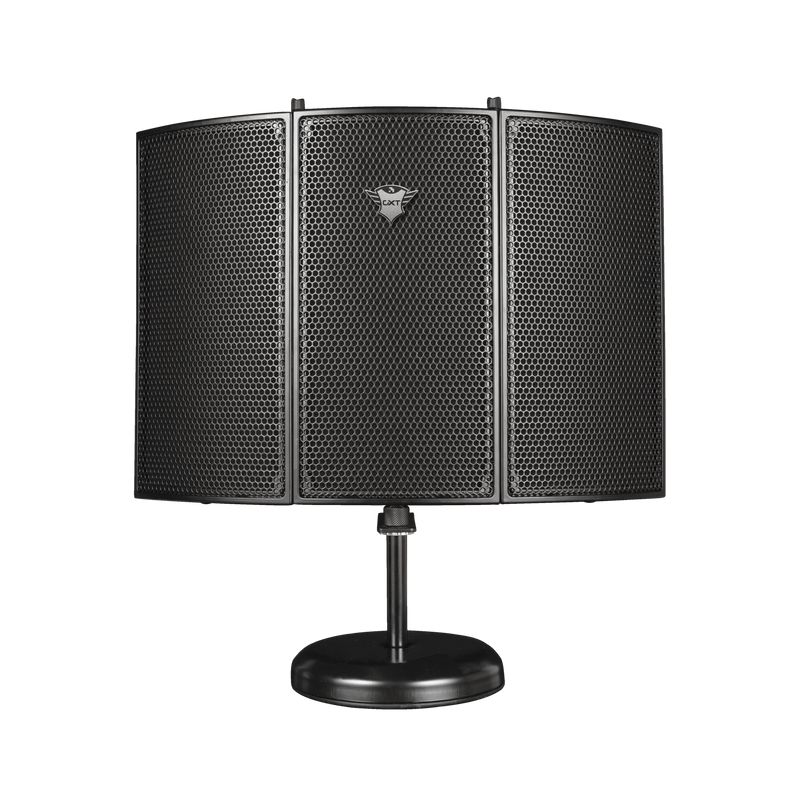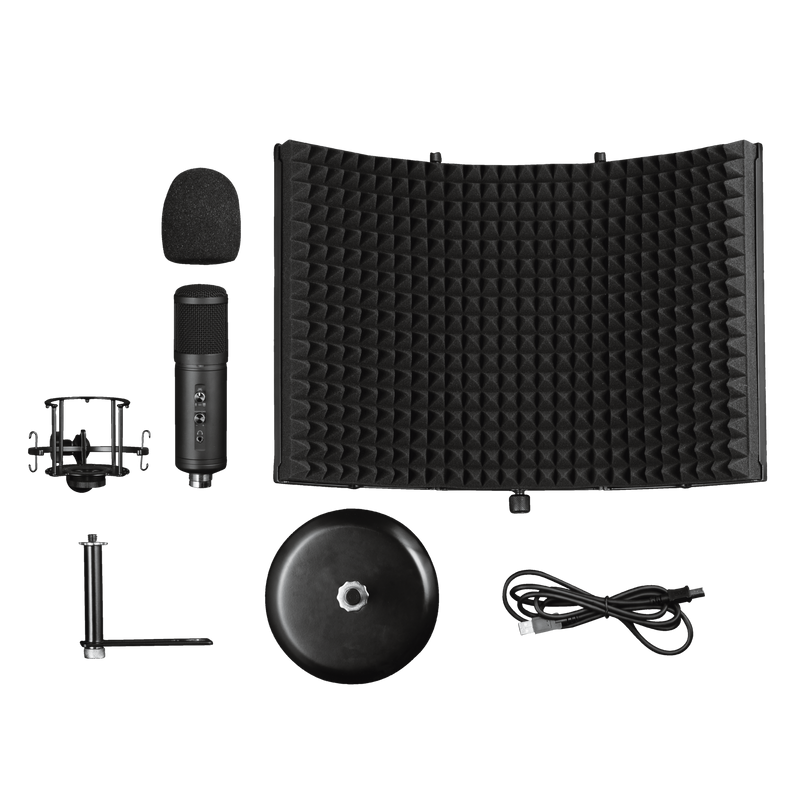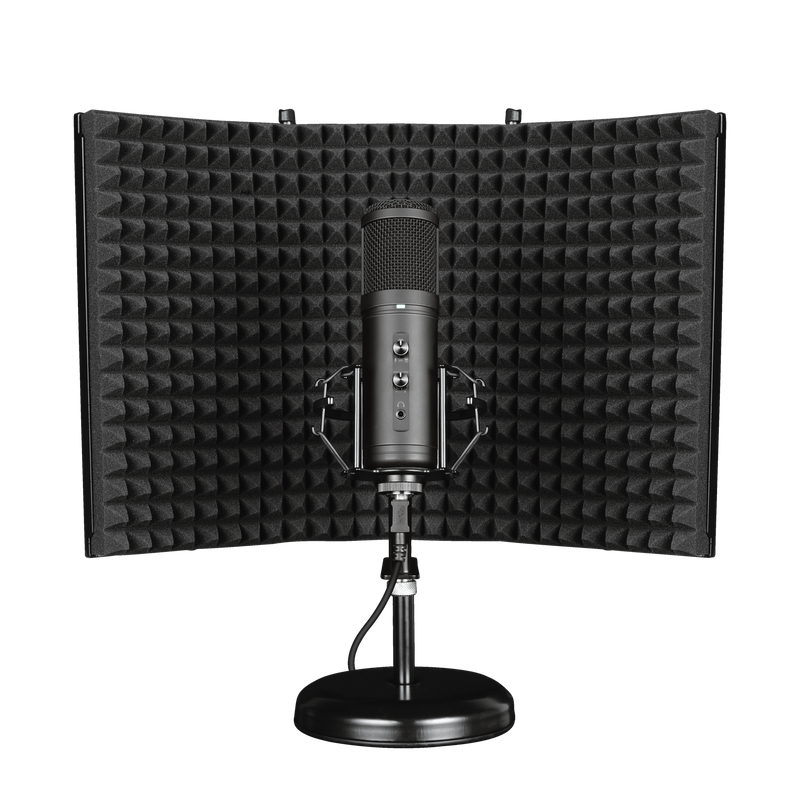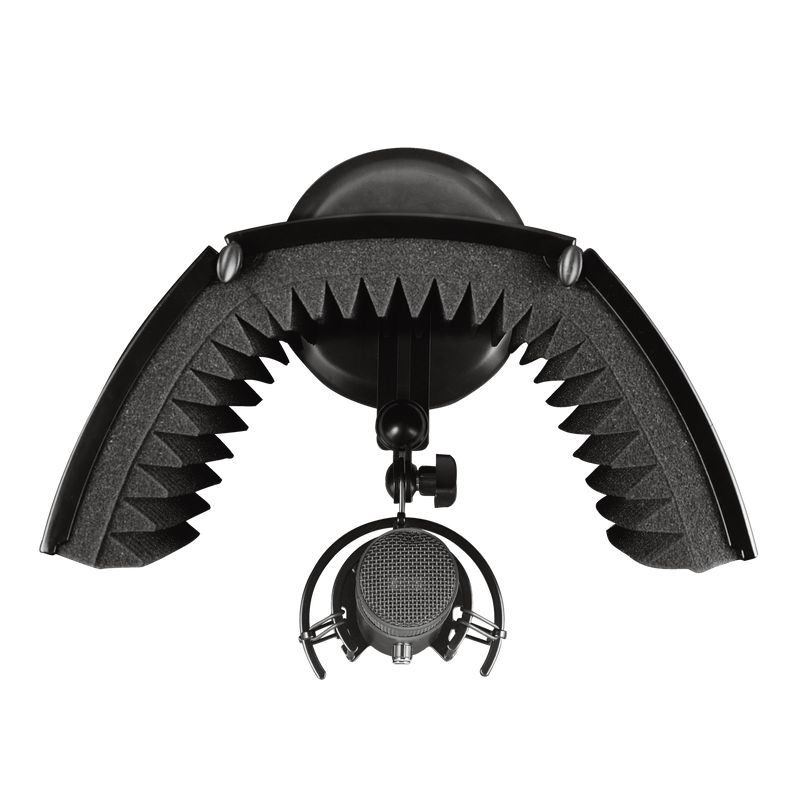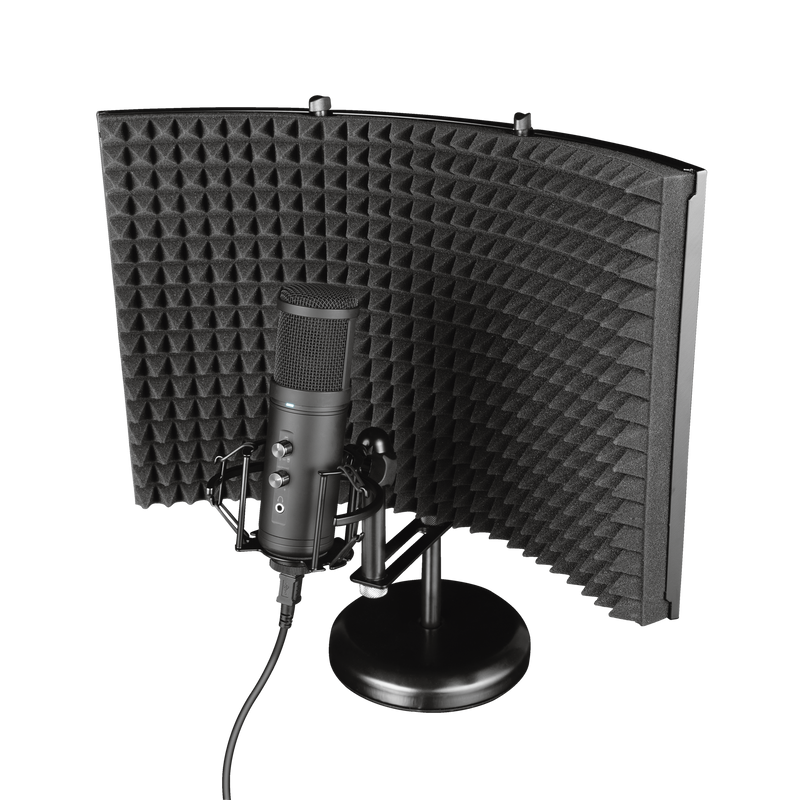GXT 259 Rudox
Professionele setup inclusief microfoon en reflectiefilter voor opnames van studiokwaliteit
Opnemen in studiokwaliteit
Van het maken van podcasts tot documentaires, of van het zingen van popsongs tot jouw magnum opus; je hebt een goede microfoon nodig om de audio in de best mogelijke kwaliteit op te nemen. De Trust GXT 259 Rudox, met een groot reflectiescherm, terugluisteren zonder vertraging, en met het cardioïde audiopatroon, heb je alles in huis om te beginnen aan professionele studio-opnames.
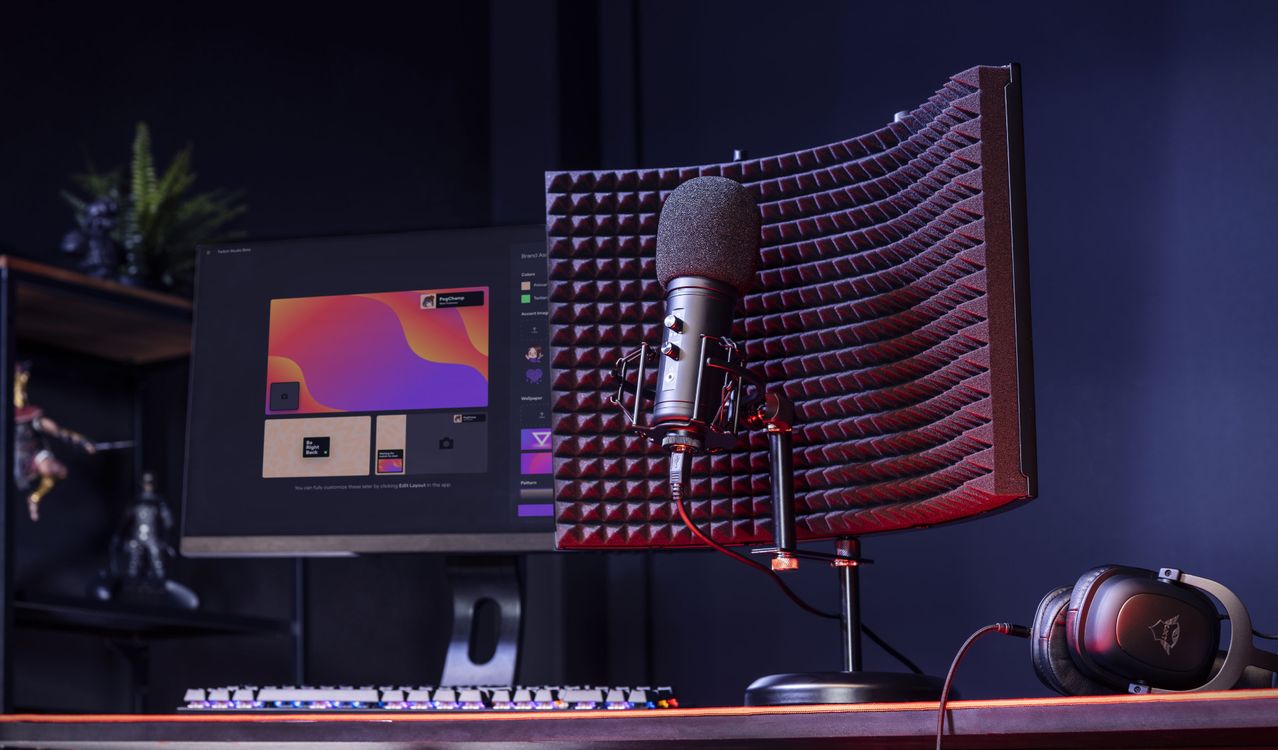
Belangrijkste kenmerken
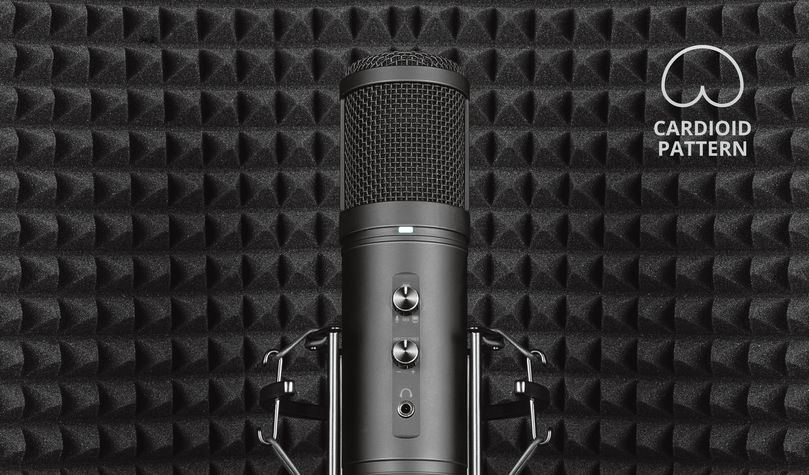
Voor contentmakers
De Trust GXT 259 Rudox is gemaakt voor elk type content-creator. Dankzij het cardioïde audiopatroon worden achtergrondgeluiden gereduceerd, wat deze microfoon heel geschikt maakt voor podcasts, voice-overs of live-streams. Zing je eigen liedjes en speel op akoestische instrumenten; de Rudox neemt elk geluid wat je maakt op in de hoogst mogelijke kwaliteit.
Reflectiescherm
Door het reflectiescherm achter de microfoon te plaatsen, worden echo’s nog meer gereduceerd, waardoor dit de ultieme set-up is voor iedereen die geluidsopnames in hoge kwaliteit wil hebben. De panelen van het scherm kunnen helemaal naar wens aangepast worden, terwijl de hele unit stevig op de metalen plaat met ingebouwde shockmount blijft staan. Zo maak je eenvoudig een volledige studio van je kamer.
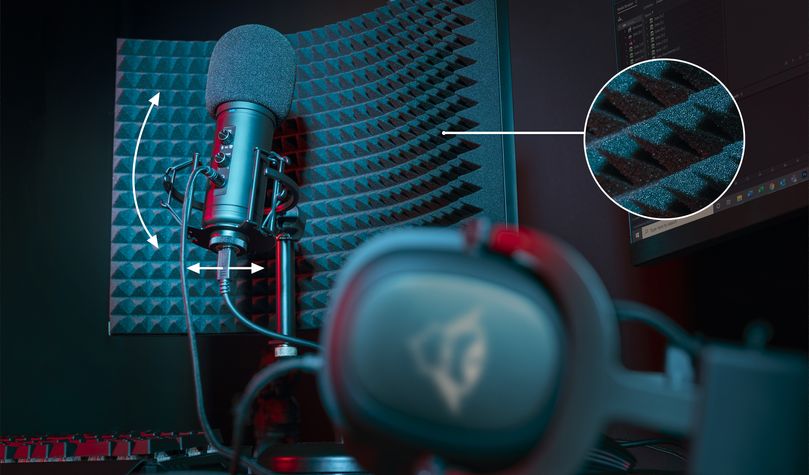
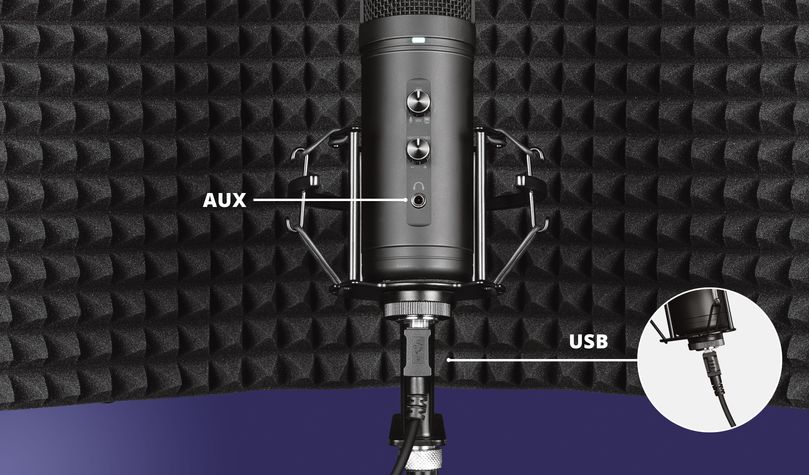
Aansluitingen
Dankzij de USB-aansluiting wordt audio in volledige, digitale kwaliteit opgenomen. Je hebt geen mengpaneel nodig; een pc of laptop met een vrije USB-aansluiting is voldoende. Jouw stem in de gaten houden, wordt gemakkelijk gemaakt met de geïntegreerde hoofdtelefoonaansluiting met zero-latency audio-monitoring. Het moment dat je het zegt, dan hoor je het terug. Dit, gecombineerd met de mixcontrol- en mute-knoppen, geeft je volledige controle over jouw studio-opnames.
Specificaties
Features
Size & Weight
General
Control
Connectivity
Audio
Microphone
Mount
Compatibility
Extra informatie
Microfoon
Reflectiefilter
Schokdemping
Plopfilter
Metalen statief
USB-kabel
Gebruikershandleiding
USB-poort
Windows 7, 8, 10
Mac OS X 10.5 (Leopard) of nieuwer
Downloads
Conformiteitsinformatie
Versie 1.0 | Meertalig
Conformiteitsinformatie
EU-conformiteitsverklaring
Versie 1.0 | Meertalig
EU-conformiteitsverklaring
Veelgestelde vragen (FAQ)
To install:
- Assemble the microphone and set it in your preferred position
- Connect the USB-plug to the USB-connection of the computer
- Set the GXT 259 Microphone as the default sound input and sound output device on the computer.
- Check the microphone properties and on Windows 10 the Microphone Privacy settings.
- The microphone is ready to use
You switch on/off the microphone by pressing the mute button on the front.
The LED is red when the microphone is off/muted.
The LED is off when the microphone is on.
There are 5 volume options via this microphone
- 2 buttons on the microphone:
mic volume
headset/speaker volume - 3 options in Windows:
Sound Control Panel > Playback > click on device > Properties > Levels > Speakers/Headphones
Sound Control Panel > Recording > click on device > Properties > Levels > Microphone Array
Sound Control Panel > Recording > click on device > Properties > Levels > Microphone Boost
Check both the headset volume on the computer, as well as the headset volume on the microphone itself. The headset volume button is located on the front of the microphone, right above the headset connection.
Check both the microphone volume on the computer, as well as the microphone volume on the microphone. The microphone volume button is located on the front of the microphone, right above the headset volume button.
The standard microphone volume in Windows is 2.0 dB, which should be sufficient for most purposes.
The red light indicates that the mic mute function has been activated.
When mute is activated, the buttons will not function.
Trust heeft geen Service Centra aangezien onze defecte producten niet worden gerepareerd, maar direct door de winkelier worden omgeruild in de garantieperiode.
Wij hebben een 'return to retailer' garantie.
Dit betekent dat je, wanneer het product in garantie is, terug kan met product en aankoopbewijs naar de winkel/webshop en het product kan omruilen voor een nieuw exemplaar.
De volledige garantievoorwaarden kan je raadplegen op:
https://www.trust.com/support/warranty
The pick-up pattern of a microphone is the sensitivity to sound relative to the direction or angle from which the sound arrives, or how well the microphone "picks up" the sound from different directions. The most common types are: Cardioid, Omnidirectional, Unidirectional, Bidirectional.
CARDIOID
The most commonly used pattern is most sensitive at 0° (the front) and least sensitive at 180° (the back). This isolates it from unwanted ambient sound. You can use this for most recording applications. It is easy to get a good signal as the cardioid pattern blends out a bad sounding room, a noisy fan in the background, etc.
OMNIDIRECTIONAL
The omnidirectional microphone has equal sensitivity at all angles. This means it picks up sound evenly from all directions. Therefore, the microphone need not be aimed in a certain direction. It will be especially useful in good sounding rooms.
UNIDIRECTIONAL
Unidirectional microphones are most sensitive to sound arriving from directly in front (at 0°) and less sensitive in other directions. This makes unidirectional microphones effective at isolating the desired sound from both unwanted sound and ambient noise.
BIDIRECTIONAL
A bidirectional microphone (with figure-8 pattern) picks up the sound from in front of the microphone (at 0°) and from the rear (at 180°), but not the side (at 90° and 270°). It can be beneficial in situations where you do not want a signal coming from a 90° angle to bleed into the microphone.
Neem contact op
Neem contact op
Kijk eerst bij onze FAQ's, de kans is groot dat u het antwoord daar vindt.
Kunt u het antwoord niet vinden in de FAQ? Vul het onderstaande formulier in met zoveel mogelijk informatie en een van onze medewerkers zal zo snel mogelijk reageren. Onze berichten worden beantwoord in de volgorde waarin ze ontvangen zijn.
Na het versturen van het formulier wordt een bevestiging weergegeven met uw referentienummer. De bevestiging zal tegelijkertijd naar uw e-mailadres worden verzonden. Als u het bevestigingsbericht niet hebt ontvangen in uw mail, controleert u alstublieft uw spam- of junk-mailmap. Vindt u het bericht ook daar niet terug, stuurt u dan het formulier nogmaals, met uw correcte e-mail adres.
